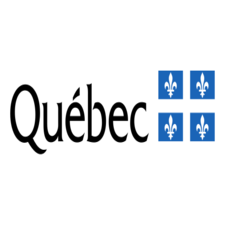BQMA
Type of resources
Topics
Keywords
Contact for the resource
Provided by
Formats
Representation types
Update frequencies
status
-

This theme presents the trophic status of lakes monitored as part of the Voluntary Lake Monitoring Network (RSVL) between 2004 and 2024. The trophic state is the result of the compilation of data acquired as part of this network. Trophic levels are used to classify lakes according to their degree of biological productivity; their condition can vary from ultra-oligotrophic to hyper-eutrophic.**This third party metadata element was translated using an automated translation tool (Amazon Translate).**
-

This thematic layer represents the characterization of the hardness of surface water in Quebec. The hardness is presented according to the medians calculated from the concentrations of calcium and magnesium ions in seven classes. Water hardness influences the toxicity of certain metals, including barium, beryllium, cadmium, chromium, copper, manganese, nickel, nickel, lead, and zinc. Surface water quality criteria are determined according to the hardness of the receiving watercourse. These criteria are used to make judgments about surface water quality and are the basis for groundwater criteria used to assess the quality of groundwater that recurs as surface water. Finally, they are the key element in calculating environmental discharge objectives (EORs) used to assess the quality of wastewater discharges to the aquatic environment. For a discharge that occurs on an annual basis, the median hardness of the receiving water body is generally used to calculate water quality criteria for aquatic life.**This third party metadata element was translated using an automated translation tool (Amazon Translate).**
-

The objective of benthos monitoring is to know the state of benthic macroinvertebrate communities in rivers according, in particular, to the composition of the substrate and the type of flow. Information on benthic macroinvertebrate samples collected at benthos monitoring stations is classified according to the benthos health index: iSBG for coarse-substrate streams and iSBM for soft-substrate streams. The Benthos Health Index (ISB) is a multimetric index based on benthic macroinvertebrates that assesses the biotic integrity of shallow streams. The benthos monitoring dataset includes a layer of sampling stations sampled between 2003 and 2023 and a layer of drainage areas for each of the types of substrate, either coarse or loose. The drainage area attribute table also provides a compilation of land use by category for the last year available at the time of data production, i.e. the year 2020.**This third party metadata element was translated using an automated translation tool (Amazon Translate).**
-

This thematic layer shows the location of pesticide stations in surface water monitored as part of various studies. The data comes from an extraction from the BQMA and, when a report is available on the Department's website, the reader can access it from a link in the information window. The dataset on the monitoring of pesticides in surface water also includes a layer of sampling stations, a layer of polygons presenting the drainage areas of some of the stations and finally, a data table including the compilation of land use by year for each of these drainage areas. The drainage areas and the land use table are linked to the sampling stations based on the BQMA station number.**This third party metadata element was translated using an automated translation tool (Amazon Translate).**
 Arctic SDI catalogue
Arctic SDI catalogue